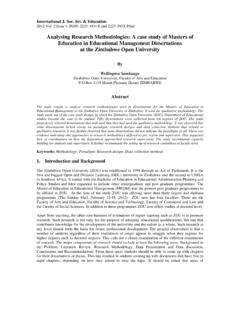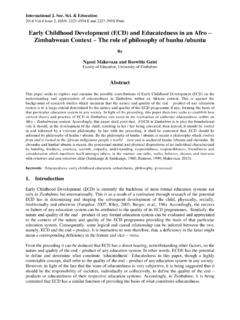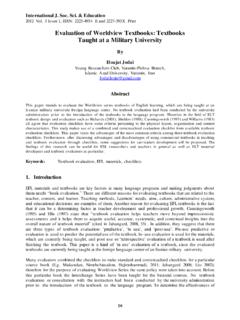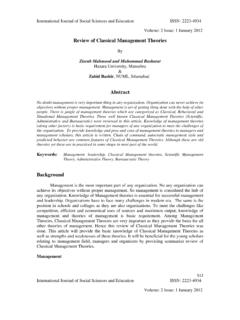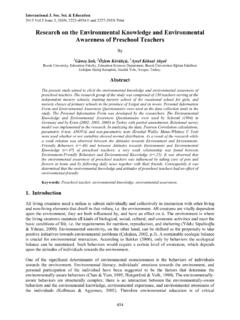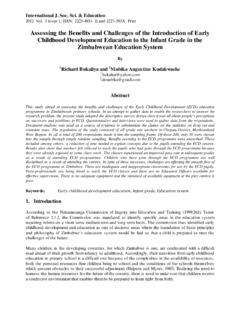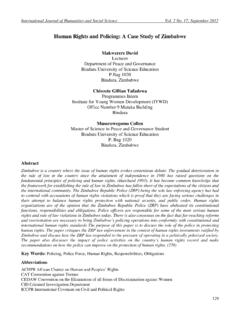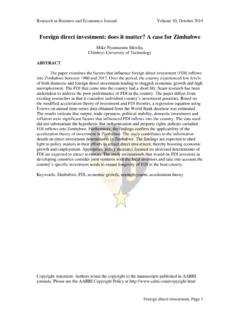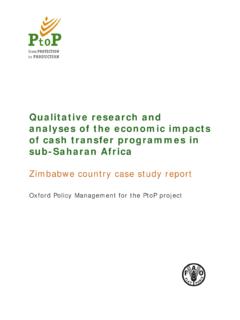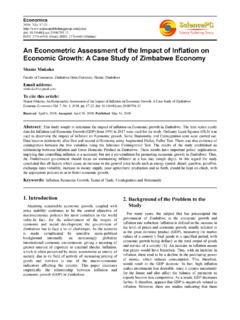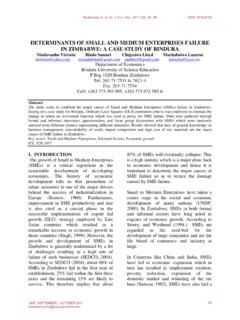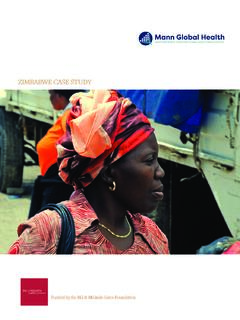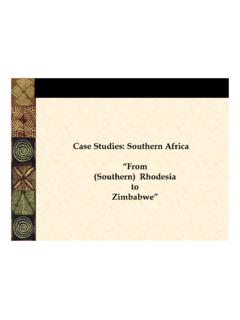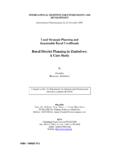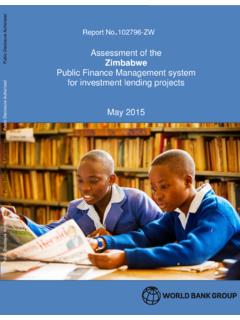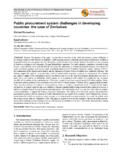Transcription of Education for All: Issues and Challenges: The Case for ...
1 Education for All: Issues and challenges : The case for zimbabwe 313 International Journal of Social Sciences and Education ISSN: 223-4934 Volume: 1 issue : 4 October 2011 Education for All: Issues and challenges : The case for zimbabwe By Mubika Augustine Kudakwashe & Bukaliya Richard Abstract This present study was carried out in order to establish the benefits and challenges of the Education for All Policy in zimbabwe . The study adopted the descriptive survey design since it was all about people`s perceptions on the benefits and challenges of the policy of Education For All.
2 In order to solicit data from the respondents, the questionnaire, and document analysis and interview schedule were used. The population of the study consisted of 306 prospective respondents, among them, Education Officers and Heads of Ministries in the different government departments in the seven districts of Mashonaland West Province. Out of a total population of 306, only 123 made it into the sample that was chosen through convenience sampling based on the availability and vicinity of the respondent to the researchers. However, results collated for the present study were from 115 respondents because some 8 prospective respondents did not submit the questionnaires issued to them.
3 Results of the study show that the policy of Education for All has benefitted the masses a lot in a number of ways. These included churning out school leavers for industry and commerce, helping to break the cycle of poverty by creating a new generation that is literate and numerate and capable of being self employed, laying a foundation for skills training and further Education and providing pupils with literacy and numeracy, life skills, and basic general knowledge of health, nutrition, and societal development, among others. Recommendations for the way forward included suggestions that there should be the involvement of all stakeholders in the provision of Education for all and that communities should consider cost-sharing in terms of fees payment to cushion the disadvantaged families and making Education more relevant to the needs of society.
4 Introduction The investment in human capital and provision of Education has been recognized as central to quality life. The provision for Education and literacy for all, the cornerstone for quality life, have been recognized at national policy level. This is in accordance with the United Nations Declaration on Basic Human Rights. Upon the attainment of political independence, most countries are faced with a daunting task to make provisions for all services promised to the population during campaign periods. The majority of countries in Sub-Saharan Africa have found themselves in such a situation as leaders seek to appease the electorate.
5 One area that has received attention from the political leaders has been the Education system. Realizing that the majority of their citizens were deprived of formal Education during the colonial era, most, if not all, countries embarked on an extensive Education drive to provide the marginalized Education for All: Issues and challenges : The case for zimbabwe 314 International Journal of Social Sciences and Education ISSN: 223-4934 Volume: 1 issue : 4 October 2011 citizens with the much sought Education . The benefits of such endeavors are undisputable as the majority of the counties made Education accessible to the vast majority of the citizens.
6 zimbabwe , being one such country , experienced a boom in the enrolment figures as schools were established within a walk able distance from the children`s homes. While significant strides and positive results were realized, towards the attempt to make Education readily available to all those in need through the policy of Education For All, a number of challenges were met. This study, therefore, was carried out with the main intention of establishing the benefits and challenges of the Education For All Policy. Background to the study The importance of providing Education for All (EFA) cannot be over emphasized. Most African states, upon attaining independence realized the need to educate the nation, for there was need to boost the manpower base and reap more social and private benefits from the Education of the masses.
7 On attaining independence, virtually all the African countries, embarked on a massive expansion of educational provision at all levels. zimbabwe is no exception. According to Chivore (1992), on attaining independence in 1980, the country faced political, economic, and social challenges that normally accompany attempts to build a new nation. In the social arena, the government undertook massive and unprecedented expansion of Education at both the primary and secondary school levels. In 1979, zimbabwe had 2,401 primary schools with an enrollment of 819,586 pupils. By 1989, the country had 4,504 primary schools with an enrollment of 2,274,178 pupils.
8 At the secondary school level, in 1979 there were 177 secondary schools with an enrollment of 66,215 pupils. By 1989, the country had 1,502 secondary schools with an enrollment of 695,882 pupils. The expansion was welcome as the majority of the marginalized people could access the Education they had yearned for, for a long time. However, despite the exponential growth in the enrolment figures, a lot of challenges have been met in the process of providing Education to the masses. It is the aim of the present study therefore to assess the benefits and challenges of the policy of Education For All from the period 1980 to 1990. Statement of the problem The process of attaining Education For All in zimbabwe , has like in any other country , achieved unprecedented success as evidenced by the fact that zimbabwe has the highest literacy rate (92%) in Africa.
9 However, despite this mega achievement, problems continue to bog the process of fully implementing the policy of Education For All. This study therefore, sought to answer the question: To what extent has the Education system succeeded in implementing the Education For All policy? Research questions In order to answer the question at hand, the following sub-problems were essential: 1. What benefits have the Zimbabwean Education system derived from the policy of Education For All? Education for All: Issues and challenges : The case for zimbabwe 315 International Journal of Social Sciences and Education ISSN: 223-4934 Volume: 1 issue : 4 October 2011 2.
10 What challenges have the Zimbabwean Education system encountered in her attempts to introduce the Education For All Policy? 3. What are the potential remedies for militating against the identified challenges confronting Zimbabwean Education system in her attempt to implement the policy of Education for All? Education for All Policy in zimbabwe Following the attainment of political independence in the country in 1980, there were expectations from the populace that there would be remarkable changes in all sectors of the economy. Rightly so the newly elected government heeded to the call for the provision of Education to all those who required it regardless of race, creed, sex or religion.
